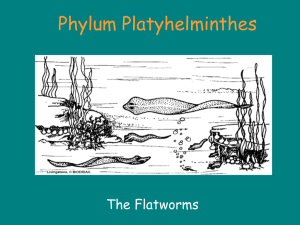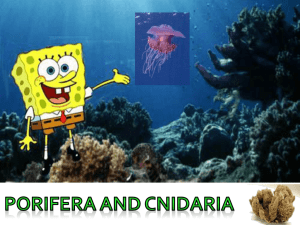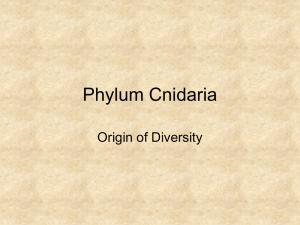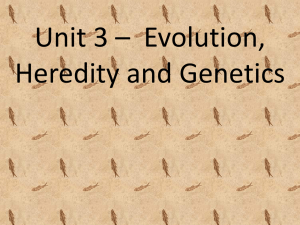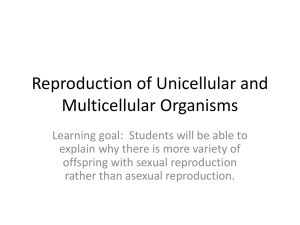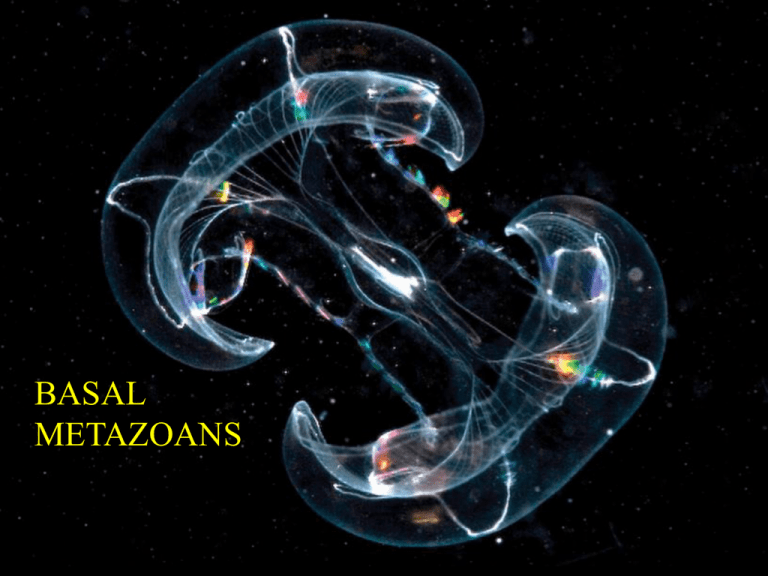
BASAL
METAZOANS
A body plan, baupläne, ground plan, ground pattern, or
bodyplan, is "an assemblage of morphological features shared
among many members of a phylum-level group"
Bauplan (pl. Baupläne) The generalized body plan of an archetypal
member of a major taxon.
Look at 4 groups
1. Placozoa
2. Cnidaria
3. Ctenophora
4. Platyhelminthes
PLACOZOA
PLACOZOA
Distribution
PLACOZOA
Characteristics of Placozoa
1) Asymmetric.
2) No distinct tissues or organs.
3) No nervous system.
4) No body cavity or digestive cavity.
5) Body is shaped like a flat disc.
6) Two layers of single cells.
7) Marine.
8) One species only known Trichoplax adhaerens
PLACOZOA
Cover cells
Cylinder Fibre
cells
cells
Gland
cells
PLACOZOA
Feeding -
Placozoan movement
PLACOZOA
Reproduction
1. Binary fission
2. Budding
3. Sexual
PLACOZOA
Reproduction
1. Binary fission
2. Budding
3. Sexual
“hollow swarmer”
PLACOZOA
Reproduction
1. Binary fission
2. Budding
3. Sexual
“hollow swarmer”
PLACOZOA
Reproduction
1. Binary fission
2. Budding
3. Sexual
PLACOZOA
Reproduction
1. Binary fission
2. Budding
3. Sexual
oocyte
zygote
Fertilization
membrane
yolk
CNIDARIA
ANTHOZOA
SCYPHOZOA
CUBOZOA
HYDROZOA
Diploblasty
Ectoderm
Mesoglea
Gastroderm
CNIDARIA
Feeding
CNIDARIA - EMBRYOLOGY
Radial and holoblastic cleavage
Stereogastrula
CNIDARIA – PLANULA LARVA
Ectoderm
Endoderm
CTENOPHORA – COMB JELLIES
CTENOPHORA – BIRADIAL SYMMETRY
CTENOPHORA
Anal pore
Stomadeum
Pharynx
Mouth
Statocyst
Tentacle
Tentacle sheath
Meridional
canal
CTENOPHORA TENTACLE
Muscle fibres
CTENOPHORA – SUPPORT & LOCOMOTION
Locomotion
- Comb rows
Ctenophora video
CTENOPHORA FEEDING - COLLOBLASTS
CTENOPHORE - STATOLITHS
- Balancing organ
Statocyst
CTENOPHORA – REPRODUCTION AND DEVELOPMENT
CTENOPHORA – REPRODUCTION AND DEVELOPMENT
1. Form blastomeres – meridional cleavage
2. Third division – 8 macromeres
3. Fourth division – latitudinal and
unequal - micromeres
4. Micromeres divide and spread over
aboral pole and macromeres
5. Macromeres invaginate (gastrulation)
-micromeres become ectoderm
-macromeres become endoderm
6. Just before gastrulation –
- Produce additional micromeres on oral
side – invaginate to form stomatodeum
Cleavage in Beroe
Cleavage in Pleurobranchia
CTENOPHORA LARVAE
COMPARISON OF CNIDARIA AND CTENOPHORE
CNIDARIA
CTENOPHORA
Diploblastic with acellular
mesoglea
Diploblastic (triploblastic?) with
cellular mesenchyme
Radial symmetry
Biradial symmetry ; oral/aboral
axes
Nematocysts
Colloblasts
Gastrovascular body cavity
Gastrovascular body cavity
Nerve net
More specialized nerve net
Musculature – extensions of epithelial cells
Musculature – from mesenchyme cells
Alternation of generations
No alternation of generations
Planula larva
Cydippid larva
PLATYHELMINTHES
Who are they?
Turbellaria
(flatworms)
Trematoda
(flukes)
Cestoda
(tapeworms
Monogenea
(flukes)
PLATYHELMINTHES
Common trends
1. Triploblastic acoelomates
2. Cephalization and central nervous system
3. Mesoderm – fibrous and muscular mesenchyme
4. Osmoregulatory structure - protonephridia
5. Elaborate reproductive systems
PLATYHELMINTHES
Limiting factors
l. Lack of efficient circulatory system
2. Lack of gas exchange system
TRIPLOBLASTY
Ectoderm
Mesoderm
Endoderm
TURBELLARIA – MAJOR ORGAN SYSTEMS



